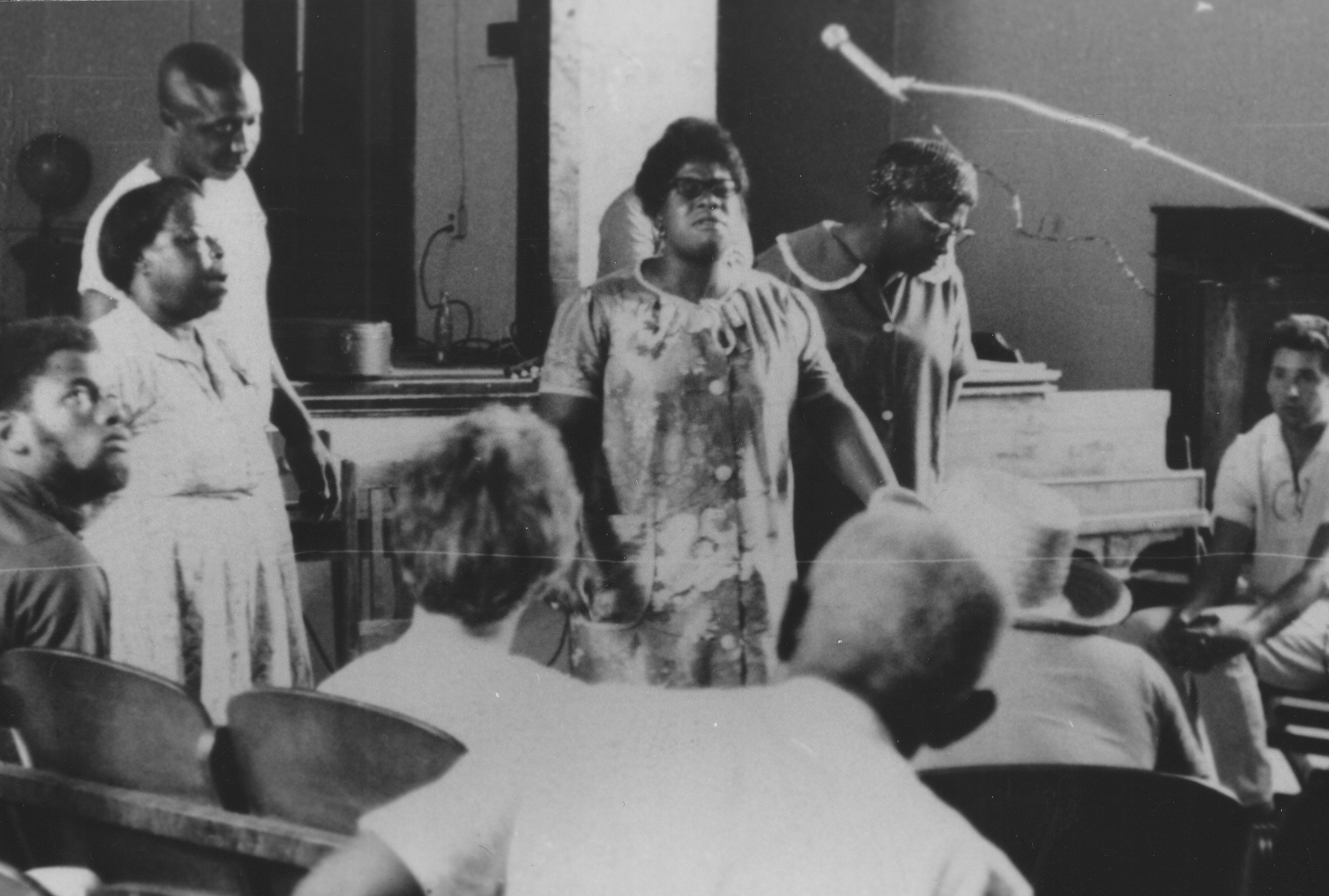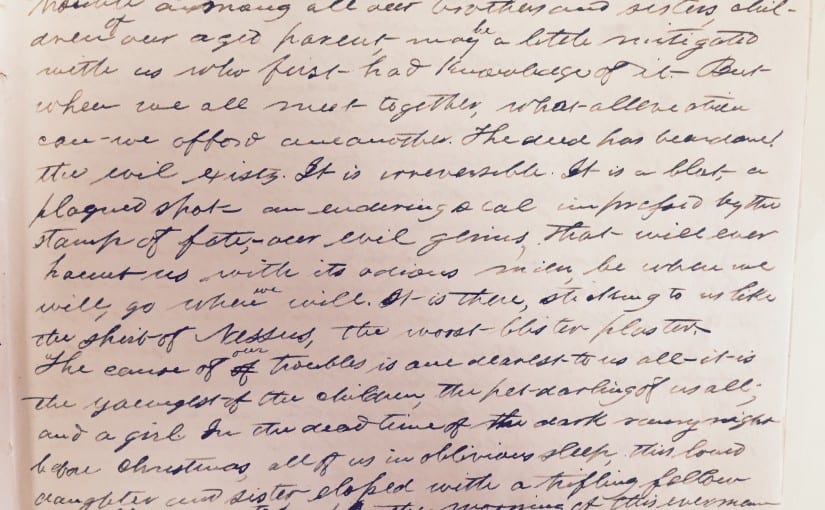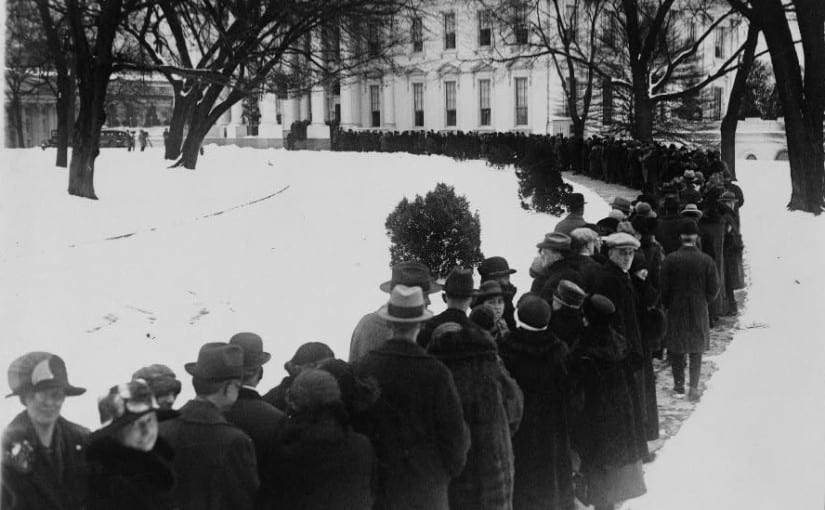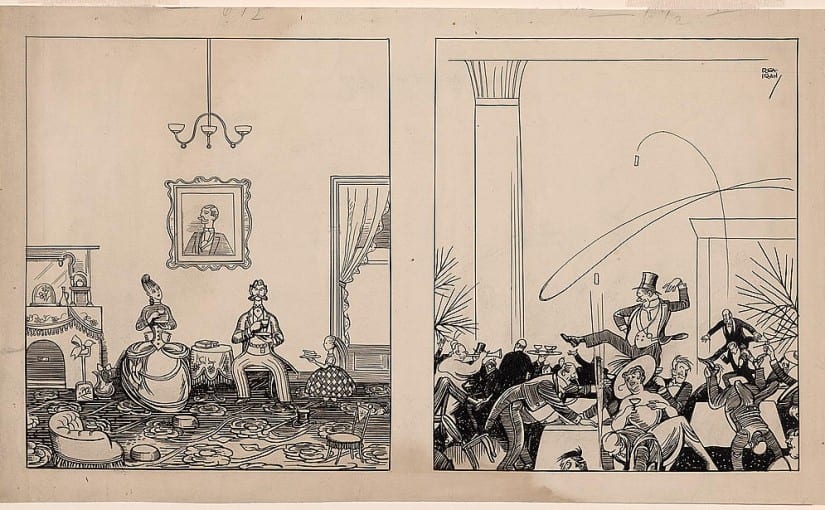

In this post I contrast two African-American watch meetings, one that heralded the year 1863, the other 1965. One perhaps was never held, but was powerfully depicted in a painting and circulated as a carte de visite, the other was recorded on twelve reel-to-reel audiotapes and never reproduced. As an historian of temporality, I am particularly interested in these two events because of their emphasis on midnight and the New Year as intertwined moments of profound importance. They also shed light on African-American politics and culture.
On December 31, 1862 black and white abolitionists and their sympathizers awaited the moment of midnight with anxious anticipation, for with the arrival of January 1, 1863, President Lincoln would, and did, sign the Emancipation Proclamation. Never had the arrival of a new year been more welcome, never had the last few moments of an old year, and with it an old regime, been wished away with more fervor: as Frederick Douglass put it, “We were waiting and listening as for a bolt from the sky, which should rend the fetters of four million of slaves; we were watching, as it were, by the dim light of stars, for the dawn of a new day; we were longing for the answer to the agonizing prayers of centuries.” The “dawn of a new day” did not come until the middle of the afternoon of January 1, 1863, when after ceremonially shaking hands for three straight hours at the President’s New Year’s Day reception, Lincoln retired to his office to sign the decree. Word of Lincoln’s disposition reached Boston via telegraph, just when, according to Douglass, “patience was well-nigh exhausted, and suspense was becoming an agony.” Many are familiar with Douglass’ account that “the scene was wild and grand.” Attend too to the next sentence from his 1882 memoirs: “Joy and gladness exhausted all forms of expression, from shouts of praise to sobs and tears.”
This was no scene for the late afternoon hours of a fading day in wintry Boston, but for the midnight hour. Indeed, an enduring and widely circulated representation of the moment of Emancipation places it at midnight December 31. Rendered by New England artist William T. Carlton, this painting titled Watch Meeting, Dec. 31, 1862,Waiting for the Hour (1863) shows, amidst a crowd of variously attired African-American men, women and children, an elderly African-American preacher earnestly looking at a pocket watch in one hand, his other resting on what is presumably the Bible. Clearly this is a watch meeting, which had its origins among Methodists in the 1740s, and had extended into various parts of the United States, especially the slave South. Behind the preacher, the Emancipation Proclamation hangs from a rough-hewn wall, illuminated by an upraised torch. At the center of the composition, the rather large watch, showing five minutes to midnight commands attention. Widely distributed as a carte de visite, this depiction of emancipation elides the necessity of Lincoln’s signature: the stroke of midnight burst the chains of slavery. Neither Carlton’s painting nor the perhaps better-known emancipation painting, Francis Bicknell Carpenter’s The First Reading of the Emancipation Proclamation (1864), convey the actual moment when Lincoln’s Emancipation Proclamation went into effect. Nevertheless, the New Year’s Eve count down leaping out from Carlton’s painting persuasively insists on midnight as the moment of liberation. In 2012 the 150th anniversary of the Emancipation Proclamation reached its zenith December 31 at midnight when an actress dressed as Harriet Tubman rang a bell at midnight in the National Archives where the original Emancipation Proclamation was in display.
Although commemorative watch night services were held in the years following Emancipation, by 1900, many urban African-American churches held commemorative services on New Year’s Day. What is more, other dates, such as Emancipation Day and later Juneteenth, brought with them emancipation celebrations. Nevertheless, a smattering of African-American watch night services persisted. No doubt this had to do with more than the mythical reverence for midnight as the moment of Emancipation, for by the 1960s the count down to midnight was the focal point of New Year’s celebrations in society as a whole. Consider the hegemonic power of the ball drop in Times Square, broadcast on radio and television alike. An extant audio recording of one such service, made in 1964/65 by the folklorists Guy and Candie Carawan in Moving Star Hall, a one-room praise house built by the Gullah Geechee people in 1917, on Johns Island, South Carolina, reveals to listeners the weight of an accumulated century in which former slaves sought freedom in the United States. The Carawans, compilers of the civil rights anthem We Shall Overcome (1963) and editors of the astounding Ain’t You Got a Right to the Tree of Life? (1966), recorded the eight-hour service on twelve extant reel-to-reel audiotapes. The hymns, prayers, sermons, and testimony together draw on the Gullah tradition of the ring shout, where participants prayed, sang, testified, stomped, clapped and shouted.
Of the watch meeting’s many powerful songs and prayers, the count down to midnight stands out on the recording of Moving Star Hall’s watch service.
After an hour or so of singing and praying in Moving Star Hall, a male voice announced: “It is now four minutes to twelve.” The small gathering responded in song: “Lord have mercy on my soul.”
Soon he broke in again, with “watchman, watchman, the time is two minutes to twelve”; again the congregation sang, “Lord have mercy, Lord have mercy, Lord have mercy, on my soul.”
A different male voice pled, “watchman, watchman, please tell me when it is time.” This is the watchman of Isaiah 52:8 and Jeremiah 31:6, who leads his people in song toward the promised land.
Moments later, the timekeeper interrupted the singing, slowly saying “It is now one minute to twelve.” And again the singing began, “Lord have mercy, Lord have mercy, on my soul.”
The time extended, well beyond one minute, the cries for mercy increased in intensity, as did the shouts of “yes, yes” and “yes Lord,” but the dirge continued.
Finally, the watchman proclaimed, “The old year is passed and gone, the New Year is commenced.” No hoots and hollers, instead the plaintive words, sung by all: “how long watchman, how long?”
Rising in volume, “How long, Mr. Watchman, how long?”
Then rhythmic clapping, “64 passed away, 65 is come” interspersed with “Mr. Watchman how long?”
Listen here:
Screaming, howling, stomping, clapping in double time, the shout set in, all the while the question “how long watchman, how long?” rang out. The collective release of sadness, hope, despair, resignation, doubt continued until dawn. As Esau Jenkins, a local civil rights leader, explained in a later interview with the Carawan’s: “you can see them singing for a better day, shouting for a better day.” To bring in 1965, the people gathered at Moving Star Hall sang more than sixty different hymns, gave voice in prayer and in testimony, and in sermon too, to as much anguish as hope. The future invoked in Moving Star Hall was “the new heaven and new earth” of Revelations Chapter 21. The count down was to death, and then to resurrection. With the very last hymn sung, “See What the End is Gonna Be,”an hour after sunrise on New Year’s Day 1965 the participants ventured forth into 1965.
Sources
Audio recording: New Year’s Watch, 1964-65, Moving Star Hall, Johns Island, South Carolina, Guy and Candie Carawan Collection (20008), Southern Folklife Collection, Louis Round Wilson Special Collections Library, University of North Carolina, Chapel Hill. Thanks to Candie Carawan for permission to reproduce tracks from the recording and to Wilson Library for recordings.



